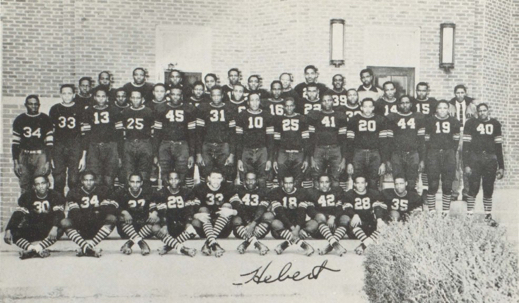
Shakeups in the 1970s came in the form of Black media mergers, selector debuts, conference re-alignment and more trophies. In 1972, the Mutual Black Network (original Mutual Reports) became the first national full-service radio network catered towards African Americans. MBN (1972-77) awarded the 11-2 Grambling State Tigers as champions after winning the inaugural Pelican Bowl over the MEAC champion, North Carolina Central Eagles (9-2). This same 1972 Pelican Bowl was moved from Southern University’s campus in Baton Rouge to NCCU’s Wallace Wade Stadium after a student-led protest about inadequate conditions turned into a police produced massacre that killed two Southern students.
Jet Magazine (1973-87, 1990-92) announced 10-0 Tennessee State their first HBCU Football champion and debuted the Paul Robeson Perpetual Trophy in 1973. In efforts of playing tougher competition, Florida A&M won a 1977 NCAA petition to be promoted to Division I. At the time, FAMU was classified in Division II as a SIAC member. When the NCAA reformatted its Division I football ranks in 1978, it launched a new subdivision system (D I-AA) based on stadium attendance and scholarship allotments. By 1978, the Florida A&M Rattlers (12-1) became the first HBCU Football team to win a NCAA tournament (D I-AA title games was also named the Pioneer Bowl, unrelated to HBCU bowl game) and a HBCU title in the same season.
The end of the 1970s marked the end of an era. The New Pittsburgh Courier stopped awarding an HBCU title and passed on their selector lineage to their minority stockholder, the Sheridan Broadcasting Network (1979-90, formerly known as Sheridan Broadcasting). By 1984, Tennessee State extends the HBCU title record to an astronomic 14 Black national championships (1946-47, 1953-54, 1965-66, 1970-71, 1973, 1979, 1982-84).

The Los Angeles Football Classic Foundation awarded the 1992 NAIA National Champion, Central State Marauders (12-2) their Eddie G. Robinson Trophy. This same dynasty at Central State marked the CSU as the first HBCU football program to win the NAIA Football National Championship tournament (also known as the Champion Bowl, wins 1990 and 1992).
Led by legendary Billy Joe, CSU took advantage of the dreaded Prop 48 rule that left many talented athletes ineligible to play in the NCAA. His teams routinely beat schools from the MEAC and SWAC who were struggling to establish themselves in Division I-AA. The differences in division hadn’t been a major issue until this point, but that would change in the coming decades.
[inArticle]

It’s not hard just look at the top 5, look at the record among the top 5 against each other and the winner will reveal itself! That’s FAMU point blank!!!!